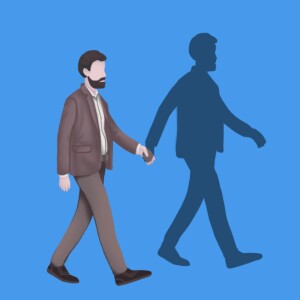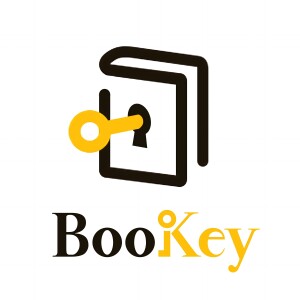
- Podcast Features
-
Monetization
-
Ads Marketplace
Join Ads Marketplace to earn through podcast sponsorships.
-
PodAds
Manage your ads with dynamic ad insertion capability.
-
Apple Podcasts Subscriptions Integration
Monetize with Apple Podcasts Subscriptions via Podbean.
-
Live Streaming
Earn rewards and recurring income from Fan Club membership.
-
Ads Marketplace
- Podbean App
-
Help and Support
-
Help Center
Get the answers and support you need.
-
Podbean Academy
Resources and guides to launch, grow, and monetize podcast.
-
Podbean Blog
Stay updated with the latest podcasting tips and trends.
-
What’s New
Check out our newest and recently released features!
-
Podcasting Smarter
Podcast interviews, best practices, and helpful tips.
-
Help Center
-
Popular Topics
-
How to Start a Podcast
The step-by-step guide to start your own podcast.
-
How to Start a Live Podcast
Create the best live podcast and engage your audience.
-
How to Monetize a Podcast
Tips on making the decision to monetize your podcast.
-
How to Promote Your Podcast
The best ways to get more eyes and ears on your podcast.
-
Podcast Advertising 101
Everything you need to know about podcast advertising.
-
Mobile Podcast Recording Guide
The ultimate guide to recording a podcast on your phone.
-
How to Use Group Recording
Steps to set up and use group recording in the Podbean app.
-
How to Start a Podcast
-
Podcasting
- Podcast Features
-
Monetization
-
Ads Marketplace
Join Ads Marketplace to earn through podcast sponsorships.
-
PodAds
Manage your ads with dynamic ad insertion capability.
-
Apple Podcasts Subscriptions Integration
Monetize with Apple Podcasts Subscriptions via Podbean.
-
Live Streaming
Earn rewards and recurring income from Fan Club membership.
-
Ads Marketplace
- Podbean App
- Advertisers
- Enterprise
- Pricing
-
Resources
-
Help and Support
-
Help Center
Get the answers and support you need.
-
Podbean Academy
Resources and guides to launch, grow, and monetize podcast.
-
Podbean Blog
Stay updated with the latest podcasting tips and trends.
-
What’s New
Check out our newest and recently released features!
-
Podcasting Smarter
Podcast interviews, best practices, and helpful tips.
-
Help Center
-
Popular Topics
-
How to Start a Podcast
The step-by-step guide to start your own podcast.
-
How to Start a Live Podcast
Create the best live podcast and engage your audience.
-
How to Monetize a Podcast
Tips on making the decision to monetize your podcast.
-
How to Promote Your Podcast
The best ways to get more eyes and ears on your podcast.
-
Podcast Advertising 101
Everything you need to know about podcast advertising.
-
Mobile Podcast Recording Guide
The ultimate guide to recording a podcast on your phone.
-
How to Use Group Recording
Steps to set up and use group recording in the Podbean app.
-
How to Start a Podcast
-
Help and Support
- Discover

The Social Animal by David Brooks is a book that explores and explains human behavior through the lens of psychology, neuroscience, and sociology. The book follows the lives of fictional characters Harold and Erica, detailing the influences and factors that shape their personalities and decisions.
Harold is portrayed as a highly intelligent and accomplished individual with a successful career, while Erica is depicted as an artistic and intuitive person. Brooks uses their stories to delve into the conscious and subconscious forces that drive human actions.
The book argues that people are deeply influenced by their unconscious mind, emotions, and social environments. It suggests that human behavior is not solely determined by rational thinking, but rather by a combination of social, emotional, and biological factors. Brooks believes that understanding these underlying factors is essential for a comprehensive understanding of human decision-making and behavior.
Brooks explores various aspects of human life, including love, marriage, parenting, education, morality, and politics. He introduces scientific research and case studies to support his arguments and presents practical insights for individuals and society.
Ultimately, The Social Animal aims to provide a deeper understanding of human nature and social interactions. It suggests that individuals should not solely rely on rational thinking but should also explore and acknowledge the subconscious factors that shape their lives.
Chapter 2:the meaning of The Social Animal book"The Social Animal" by David Brooks is a non-fiction book that explores the human nature and behavior from a psychological and sociological perspective. In the book, Brooks delves into topics such as love, attachment, parenting, decision-making, happiness, and the influence of both conscious and unconscious factors on people's lives.
Brooks argues that humans are not solely rational beings, as traditionally believed, but rather social animals whose actions and choices are heavily influenced by social and emotional factors. He emphasizes the importance of understanding the social context in which individuals develop and make decisions, and how this context shapes their lives.
The book combines scientific research, personal stories, and fictional narratives to present a multidimensional understanding of human behavior. It explores various theories and concepts from fields such as psychology, neuroscience, sociology, and economics, providing a holistic view of what it means to be human.
Overall, "The Social Animal" seeks to uncover and explain the deeper motivations, biases, and complexities that drive human behavior. It encourages readers to reflect on their own lives and relationships, and to consider the broader social forces that shape individual experiences.
Chapter 3:The Social Animal book chaptersChapter 1: The Importance of Unconscious Processing
This chapter introduces the concept of the unconscious mind as a powerful force in shaping behavior. It explores how unconscious thoughts and emotions can influence decisions and actions even when we are not aware of them.
Chapter 2: Perception and Emotion
Brooks delves into how our perceptions and emotions are shaped by our experiences, and how they can impact our behavior. He explores the role of empathy, compassion, and other emotional responses in guiding our actions and decisions.
Chapter 3: Learning and Intelligence
This chapter explores how our brains are wired for learning and the role of intelligence in shaping behavior. It delves into the difference between book smarts and social intelligence, and how we acquire and apply knowledge in real-life situations.
Chapter 4: Love, Attachment, and Morality
Brooks examines the role of love, attachment, and moral development in shaping our relationships and interactions with others. He delves into the importance of early attachment experiences in shaping our ability to form healthy relationships and develop moral compasses.
Chapter 5: Self-Creation and Identity
This chapter delves into the process of self-creation and the formation of identity. It explores how the stories we tell ourselves about who we are and our place in the world can influence our behavior and choices.
Chapter 6: The Power of Groups
Brooks explores the dynamics of group behavior and the power of groups in shaping individual behavior. He discusses how groupthink, conformity, and social norms can impact decision-making within a group context.
Chapter 7: Culture, Socialization, and Social Norms
This chapter delves into how culture and socialization shape individual behavior and societal norms. It explores the impact of societal values, beliefs, and norms on individual behavior and decision-making.
Chapter 8: Power and Character
Brooks examines the relationship between power and character, and how power dynamics can influence individual behavior. He discusses the role of character development in ethical decision-making and the potential for corruption when individuals gain power.
Chapter 9: The Future of Social Life
In the final chapter, Brooks explores the potential implications of the insights gained throughout the book on future societal trends and developments. He discusses the challenges and opportunities that lie ahead in understanding human behavior and building better social systems.
Chapter 4: Quotes of The Social Animal book- "We are not primarily the products of our own conscious thinking. We are not primarily individuals who can plan, calculate, and reason."
- "Character is the innate desire to serve others and the ideals transcending self-interest."
- "We are embedded within cultural traditions, religious codes, and social norms, and shaped by the influence of our families, friends, and communities."
- "The unconscious mind shapes our desires, our loves, and our preferences in ways we cannot fully comprehend."
- "In every interaction, we are subtly shaping and being shaped by the social world around us."
- "Our lives are woven together in a complex web of social connections, and our happiness and well-being depend on the quality of those connections."
- "The pursuit of success and achievement can often lead to emptiness, if it is not accompanied by meaningful relationships and a sense of purpose."
- "We are driven by a deep longing for belonging and connection, and we find our truest selves in our relationships with others."
- "Our social instincts are not distractions from our inner selves, but rather the foundation of who we are."
- "Ultimately, the most important things in life – love, friendship, and meaningful work – are not achieved through solitary striving, but through our connections with others."
More Episodes
 2024-11-15
2024-11-15
 17
17
 2024-11-08
2024-11-08
 21
21
 2024-11-08
2024-11-08
 36
36
 2024-10-17
2024-10-17
 19
19
 2024-09-12
2024-09-12
 56
56
 2024-09-11
2024-09-11
 25
25
Create your
podcast in
minutes
- Full-featured podcast site
- Unlimited storage and bandwidth
- Comprehensive podcast stats
- Distribute to Apple Podcasts, Spotify, and more
- Make money with your podcast
It is Free
- Privacy Policy
- Cookie Policy
- Terms of Use
- Consent Preferences
- Copyright © 2015-2025 Podbean.com




